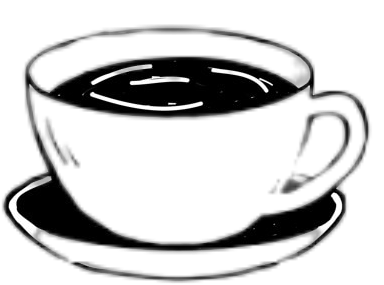Have you ever brewed an espresso only to find its taste dominated by sharp, sour notes? If so, you're not alone. Early in my espresso-making journey, I often faced this issue and struggled to achieve the smooth, balanced flavor I was aiming for. After much trial and error, I learned the techniques to turn sour espresso into a delightful experience. If you're battling sourness in your espresso, read on to discover effective solutions to improve your brew. Explore the ease of use and versatility in our DeLonghi Eletta Explore Espresso Machine with Cold Brew Review

Understanding the Cause of Sour Espresso
Before diving into solutions, it's essential to understand what causes sourness in espresso. Sour flavors often stem from under-extraction, where the coffee grounds don't interact with the water long enough to release their full flavor spectrum. The result is a shot that feels overly acidic and unbalanced. To address this, we must tackle the factors that lead to under-extraction. Discover the advanced frothing capabilities in our DeLonghi Dinamica Automatic Coffee & Espresso Machine Review
Fine-Tune the Grind Size
One of the most common reasons for sour espresso is an improper grind size. Coarse coffee grounds allow water to pass through too quickly, leading to insufficient extraction. I remember being surprised by how much a slight grind adjustment could elevate the flavor of my espresso. Compare features and performance in our DeLonghi Magnifica Evo Espresso Machine with Frother Review
Solution:
Adjust your grinder to achieve a finer grind. Make incremental changes and test each shot to find the sweet spot. Finer grounds increase the surface area for water contact, allowing better flavor extraction and reducing sourness.
Perfect Your Water Temperature
Water temperature plays a crucial role in espresso extraction. If the water is too cool, it won't extract the desirable flavors, leaving behind an unappealing sour taste. The moment I ensured my machine reached the right temperature, my espresso improved significantly. See how these two models stack up in our DeLonghi Magnifica Evo vs Philips 4300
Solution:
Maintain a brewing temperature between 195°F and 205°F (90°C to 96°C). If your machine lacks a thermometer, consider using an external one. For machines with adjustable settings, make sure they’re calibrated to maintain consistent heat.
Adjust the Brewing Time
Another major contributor to sour espresso is an overly quick brewing time. Shots pulled in under 25 seconds are often under-extracted and sour. Early on, I was guilty of pulling shots too fast, thinking they were ready.
Solution:
Aim for a brewing time of 25–30 seconds for optimal results. If your shot is too quick, try tamping the grounds more firmly or adjusting to a finer grind. This helps slow water flow, giving the coffee enough time to release its full flavor.
Use Fresh Coffee Beans
The freshness of your beans has a direct impact on flavor. Old or stale beans can produce a flat or overly acidic taste. I learned this the hard way, but once I switched to fresher beans, my espresso dramatically improved. Find out the key differences in our DeLonghi Magnifica Evo vs Philips 2200
Solution:
Choose coffee beans roasted within 2–3 weeks for the best results. Always check the roast date and aim to use beans within two weeks. If you don’t consume espresso quickly, purchase smaller quantities or subscribe to a service that delivers fresh beans regularly.
Get the Right Coffee Dose
The amount of coffee in your portafilter is critical for achieving balance. Too little coffee causes water to flow too quickly, resulting in a sour shot. A slight adjustment in the dose made a noticeable difference in my brews.
Solution:
Use a digital scale to weigh your coffee accurately. For a single shot, aim for 18–20 grams of coffee. If your shot tastes sour, increase the dose slightly to slow extraction and create a more balanced flavor profile.
Extra Tips to Master Your Espresso
Invest in Quality Equipment
Your espresso machine and grinder greatly influence your results. A high-quality burr grinder ensures consistent grinds, while a machine with stable temperature control improves shot consistency. Explore the ease of use and versatility in our DeLonghi Magnifica Evo vs Philips 3200
Stay Consistent
Consistency is key to great espresso. Once you find the right settings for grind size, temperature, and brew time, stick to them. Keeping a log of your adjustments can help you replicate your best shots.
Adapt to Your Coffee Beans
Each coffee bean is unique. Factors like roast level and origin affect how you should brew. For instance, lighter roasts often require finer grinds and longer extractions than darker ones. Experimenting and adapting to your beans is essential to achieving the best flavor.

Conclusion
Fixing sour espresso is easier than you might think once you identify the factors behind under-extraction. By fine-tuning your grind size, water temperature, brew time, bean freshness, and coffee dose, you can transform your shots into a balanced, flavorful experience. Remember, making espresso is both an art and a science. With patience and practice, you’ll master the techniques needed to brew the perfect shot.
Common Questions About Espresso Brewing
Q: Why is my espresso still sour with fresh beans?
Sourness often points to under-extraction, even with fresh beans. Check your grind size, water temperature, and brew time for possible improvements.
Q: How fine should espresso grounds be?
The grind should resemble table salt in texture. If sourness persists, try a slightly finer grind.
Q: Does tamping pressure matter?
Absolutely! Even, firm pressure (around 30 pounds of force) ensures uniform extraction.
Q: What’s the optimal brewing temperature?
Stick to 195°F–205°F (90°C–96°C) to extract the best flavors.
Q: How do I achieve consistent results?
Measure everything—grind size, coffee dose, water temperature, and brew time. Keeping detailed notes will help you replicate your perfect shot.
